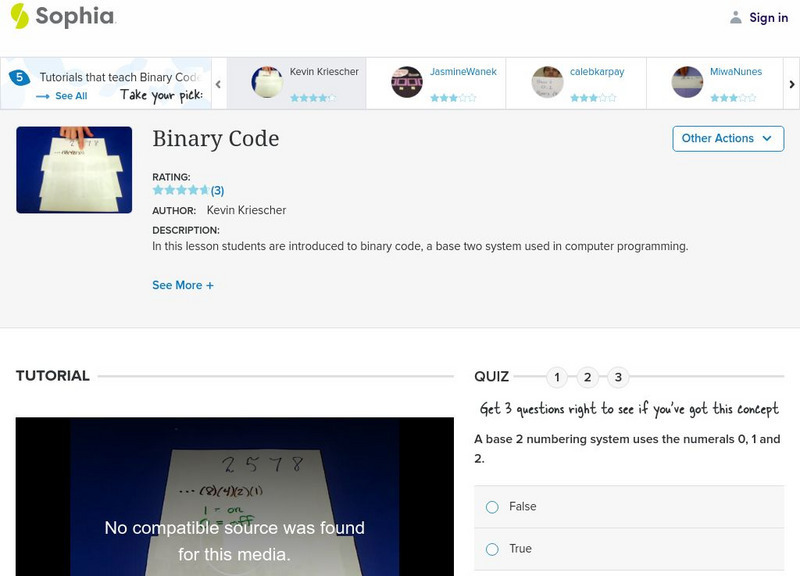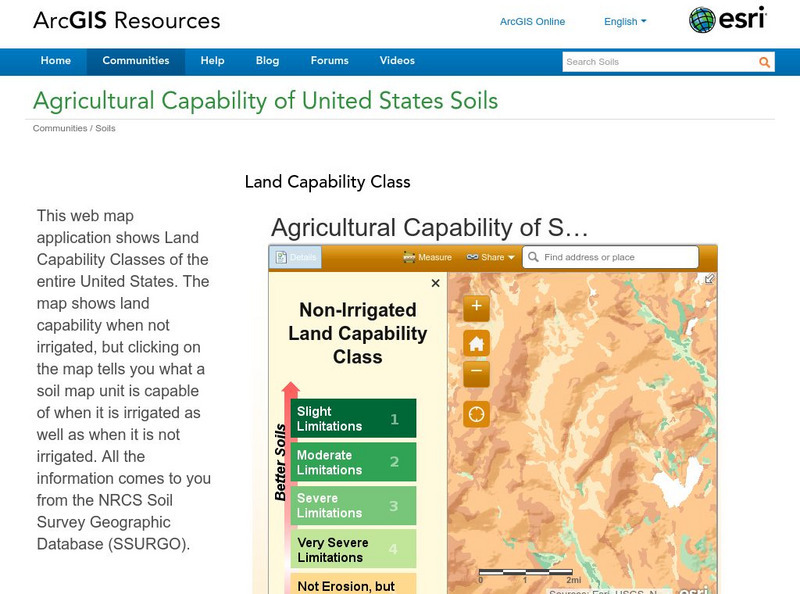Curated OER
Co-ordination and Response - Lesson Plan
Eleventh graders explain why colour blindness is more common in men than women.
Curated OER
Note Study of the Giver
Young scholars, after reading The Giver, create a PowerPoint presentation, a Web page, and a newsletter or brochure demonstrating their understanding of the novel?
Curated OER
A Long Time Ago in the Future
Students read and discuss Canadian young adult literature. They compare/contrast the elements of citizenship, characterization, and themes, write journal responses, and identify the elements that define Canadians.
Curated OER
Career Math Puzzles
Third graders come up with a career for each letter of the alphabet.
Curated OER
Picture Tomorrow
Students discuss their plans for the future. they draw pictures of something from their future that they plan to do or be. They display their art work in the classroom.
Curated OER
Where You Belong
Students identify different groups to which they belong, and use counting techniques to take a census of their family and class.
Curated OER
Adaptable Animals
Young scholars examine the types of adaptations that animals use to survive. They research the animals and report their findings to the class.
Curated OER
Freedom to Worship
Fifth graders read the biographies of seven colonists and determine their position on the freedom of religion. They conduct a panel discussion of seven personalities and debate the religious freedom in America.
Curated OER
What Would You Do? A Discussion About the Ethics of War
Students examine the process of ethical decision-making during wartime. They read three case studies from World War II, and in small groups discuss, debate, and present their findings to the class.
Curated OER
Are Curfew's Fair?
High schoolers explore and discuss how curfews are set up. They discuss how difficult it can be to define appropriate and inappropriate behavior. Students role play situations involving curfew and the behaviors they are meant to curb.
Curated OER
Reconstruction
Learners investigate the historical period of the Reconstruction and the events that surrounded the abolitionist movement. Students use guided questions to conduct research. Then they complete a venn diagram in order to compare two...
Curated OER
Cells and Cancer
Young scholars idenitfy that cancer is a growth of mutated cells and that cancer cells are only one type of cell that causes disease in our body. They also identify that all eukaryotic cells contain a nucleus, cytoskeleton, and a cell...
Sophia Learning
Sophia: Binary Code
The video lesson introduces students to the binary code. The concept is defined and examples are provided.
National Council of Teachers of Mathematics
Nctm: Figure This: Bar Codes
An exploration of the binary system using U.S. postal zip codes. Discover what numbers the long and short bars in a zip code represent in this one page activity from the NCTM Math Challenges for Families collection.
Education.com
Education.com: Morse Code Messaging
[Free Registration/Login Required] One of the most important code systems invented is the internationally-recognized Morse code, which matches dots and dashes to letters of the alphabet. This revolutionized communication by sending...
ReadWriteThink
Read Write Think: Guided Comprehension: Monitoring
Online lesson plan introduces students to the concept of monitoring. Students learn the INSERT technique, which allows them to monitor their thinking and comprehension using a coding system.
Other
Association for Computing Machinery: Acm Code of Ethics and Professional Conduct
The "Code of Ethics" from the American Association for Computing Machinery. Includes responsibility to employers, clients, system users, the profession, and society.
Other
Biology Online: Human Physiology: Sensory Systems
Study the many parts of the human body that make up the sensory systems. Be able to identify receptors, primary sensory coding, neural pathways and more with this biology resource.
Math Is Fun
Math Is Fun: Binary Number System
Learn all about the binary number system and how to count in binary. Includes a set of practice questions.
University of California
University of California at Berkeley: Justinian Code
This website describes the creation and implementation of the Justinian Code, or "The Body of Civil Law" for the Roman Empire. The site is divided into sections, including a description of the code itself, the type of laws within it,...
Huntington Library
Huntington Library: Decoding the Civil War
This is a rich learning module where students explore the use of telegraphs and of Union codes during the Civil War. Both topics have an "Explainer" to introduce it, pre- and post-activities, and primary and secondary source materials to...
Other
It's All About What's Inside. Classification and the Tree of Life [Pdf]
In this science lesson plan, students look at how animals have traditionally been classified in a tree of life diagram by examining the characteristics of plastic eggs. They then analyze the genetic code assigned for each egg and look...
Other
Esri: Arc Gis: Agricultural Capability of United States Soils
A sophisticated map tool that shows the capability of soils for agriculture, with or without irrigation, for the whole of the United States. Enter a location and a color coded map is shown, along with a key for interpreting it. The...
TryEngineering
Try Engineering: Electric Messages: Then and Now
Lesson investigates electronic communication from the Morse Code system to text messaging. To learn about this, students construct simple circuits, send messages to each other, and explore the history and impact of communication.




















